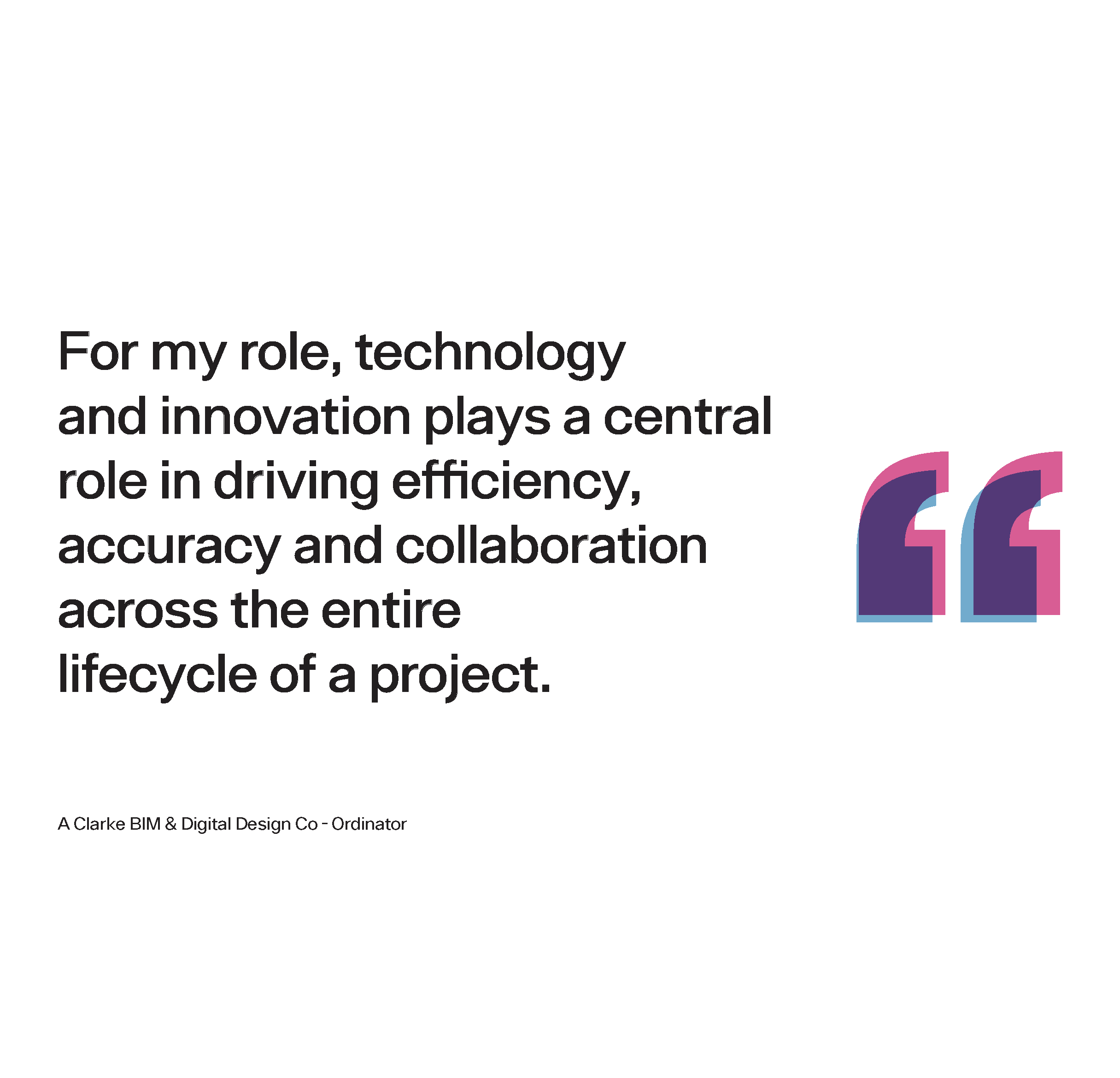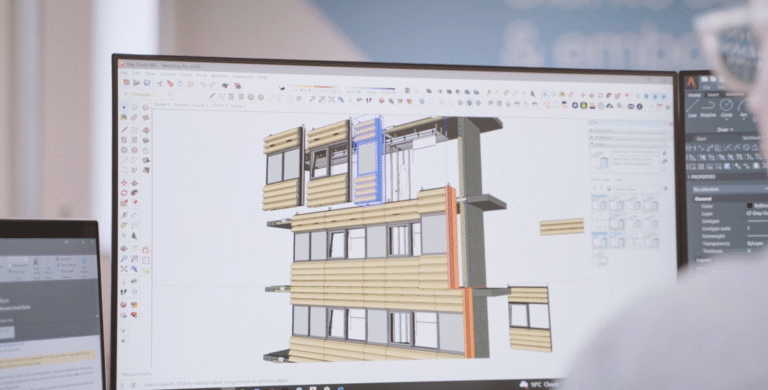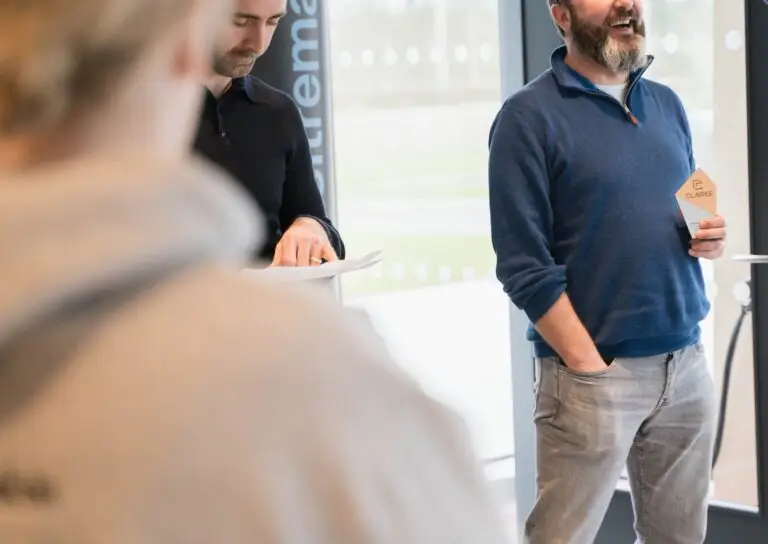Behind the Hardhat
A Day in the Life of a Clarke BIM & Digital Design Co-Ordinator
What path led you to enter this industry?
I completed my degree in Architectural Technology and Management, and then also went on to complete a masters in Building Information Modelling (BIM) Management and sustainable digital delivery with Middlesex University in London. From there I have taken on roles such as Digital Project Delivery Manager and BIM & Digital Design Co-ordinator predominantly throughout consultancy firms within the Construction industry.
What abilities and expertise are required to work effectively as a BIM & Digital Design Coordinator?
This role involves a variety of combined skills from technical, analytical design understanding through to knowledge of industry standards and tools in order to create a more efficient and digitised way of working. The skills required include expertise in BIM Authoring tools such as 3D modelling software and having an understanding of the models down to the data input behind the design. Understanding of visualisation tools is extremely important, to create sustainable design for overall enhanced project delivery. A clear understanding of the BIM protocols and requirements on a project is very important, everything from the ISO 19650 government standards through to the ability to develop BIM documentation such as BIM execution Plans (BEPs) on all projects. It is also important to be ahead of the curve in terms of digitising processes, whether that is on-site or streamlining design – looking into new technologies and ways of working for these areas of the business is essential.
What guidance would you offer to someone aspiring to work in your role?
My main advice would be to not step away from the software side, the more the BIM side of projects has evolved the more process and standards orientated it has become. Being in this role daily, one of the most important parts I find, is being able to understand the design side of the business, how the design team currently run and having an in depth understanding of the drawings being produced. The only way to do this is to remain consistent with the software itself, whether that’s Autodesk Revit for 3D modelling or AutoCAD for 2D Drawings.
What would you consider your biggest professional achievement?
My biggest achievement would be the recognition I received at the CIAT awards for turning my dissertation topic into a research paper which I received a highly commended award for amongst a huge number of brilliant industry professionals.
How does your role contribute to the success of a project from a technical or operational perspective?
BIM and digital project delivery ensures the leveraging of digital tools, processes, and collaborative workflows. The role itself involves contributing technical precision, operational efficiency, and interdisciplinary coordination.
How do you see your role or the wider construction industry evolving over the next 5 to 10 years?
Digital twins will continue to evolve and play a huge part within the industry; the role will increasingly focus on the creation and managing of these. Including, real-time, data-integrated virtual models of physical assets. I believe digital design co-ordinators will play a larger role in post-construction phases, ensuring BIM models transition seamlessly into facility management tools, supporting operational efficiency and sustainability. All technology will evolve, everything from laser scanning capabilities and generative design through to AR/VR will have significantly evolved in their capabilities. There will be an even bigger focus on carbon efficiency and net-zero focus to model energy performance, embodied carbon and economical principles overall in projects.
What role does technology or innovation play in your day-to-day responsibilities?
For my role, technology and innovation plays a central role, in driving efficiency, accuracy and collaboration across the entire lifecycle of a project.


For my role, technology and innovation plays a central role, in driving efficiency, accuracy and collaboration across the entire lifecycle of a project.
- A Clarke BIM & Digital Design Co-ordinator
You may also like...
Day in the life of Clarke BIM & Digital Design...
Day in the life of Clarke HR Officer
Clarke Pre Construction Engineer
Clarke Estimator




